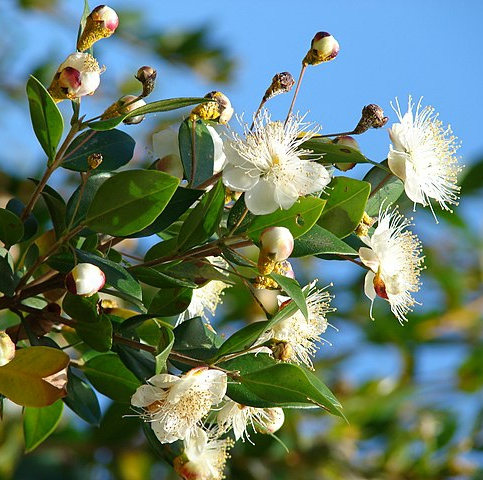From Wikipedia, the free encyclopedia
Myrtus communis, the common myrtle or true myrtle, is a species of flowering plant in the myrtle family Myrtaceae. It is an evergreen shrub native to southern Europe, North Africa, Western Asia, Macaronesia, and the Indian Subcontinent, and also cultivated. It is also sometimes known as Corsican pepper.
The medicinal properties of Myrtus communis were utilized as early as 600 B.C.E. Symbolically and ritually important in ancient times, it was used to represent honor, justice, prosperity, generosity, hope, love, and happiness. In Greco-Roman mythology, numerous gods were associated with the common myrtle and its flowers, such as Aphrodite and Demeter. Also a key part of various Jewish traditions, it is one of the four species used in the festival of Sukkot, and the Bible records its use in purification ceremonies. As a shrub that thrives along waterways, it was also seen as a symbol of restoration and recovery.
In Europe during the Renaissance, it came to be best known as a symbol of love, which led to the ongoing tradition of the flower as part of the wedding bouquet.

